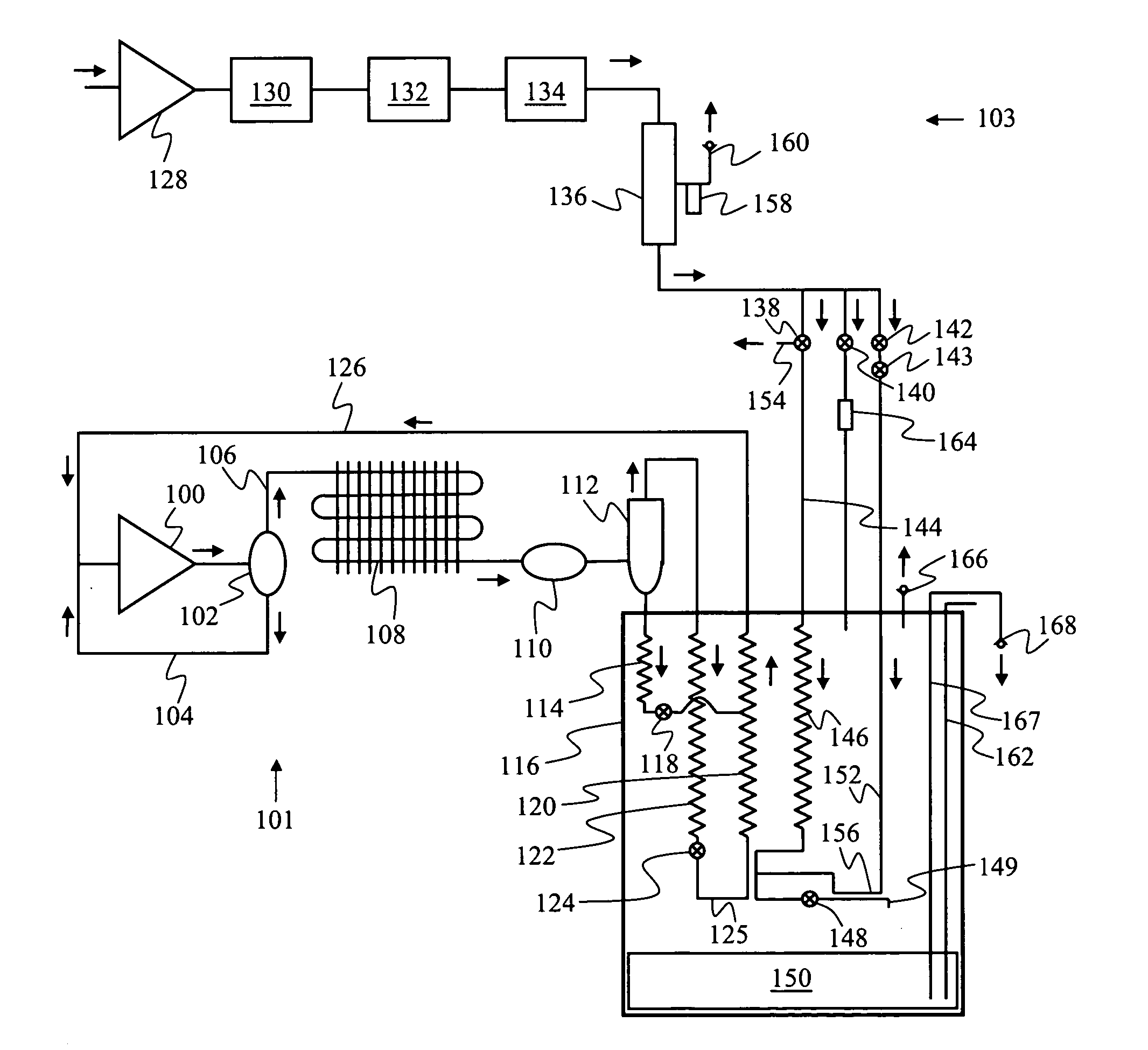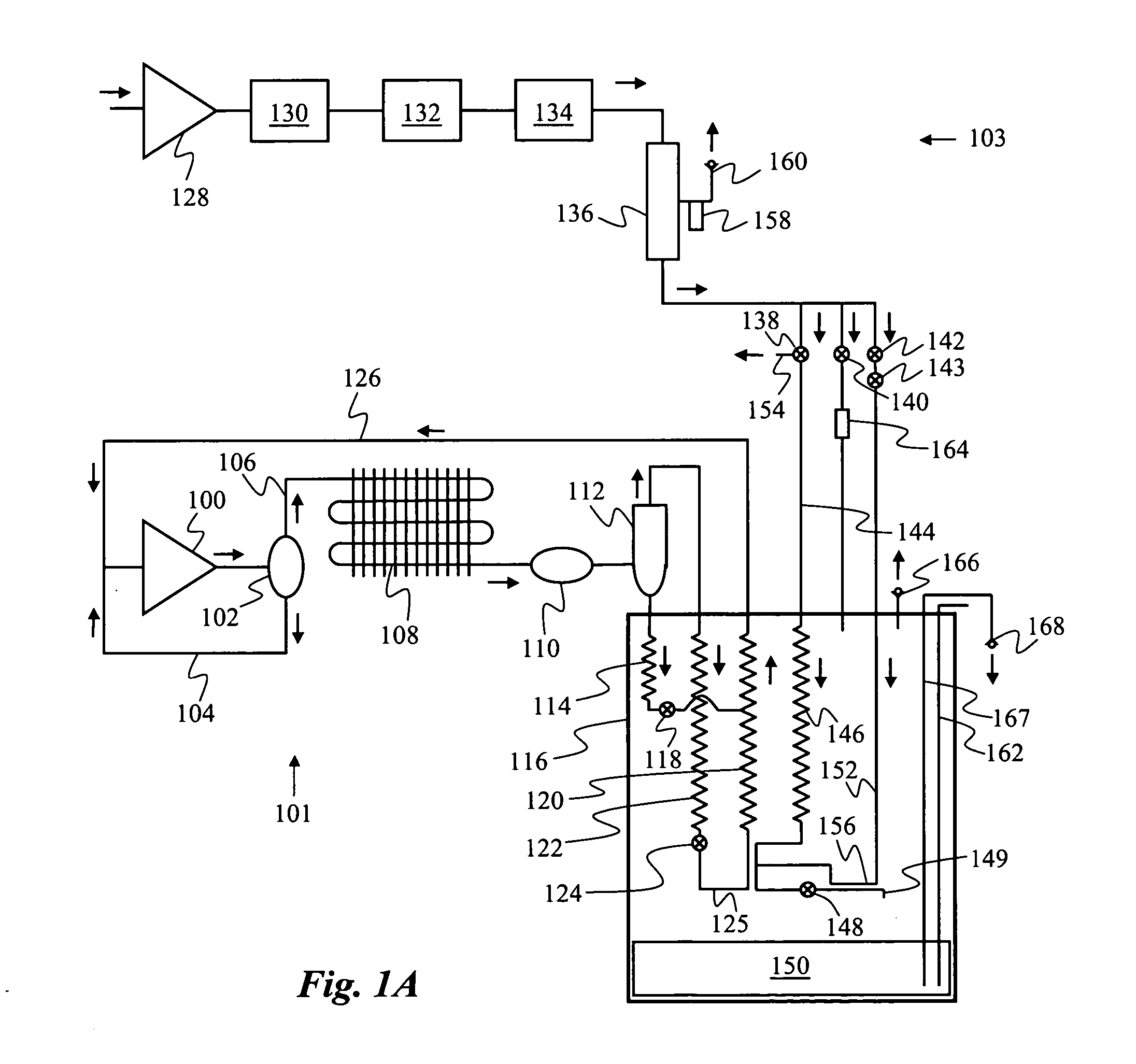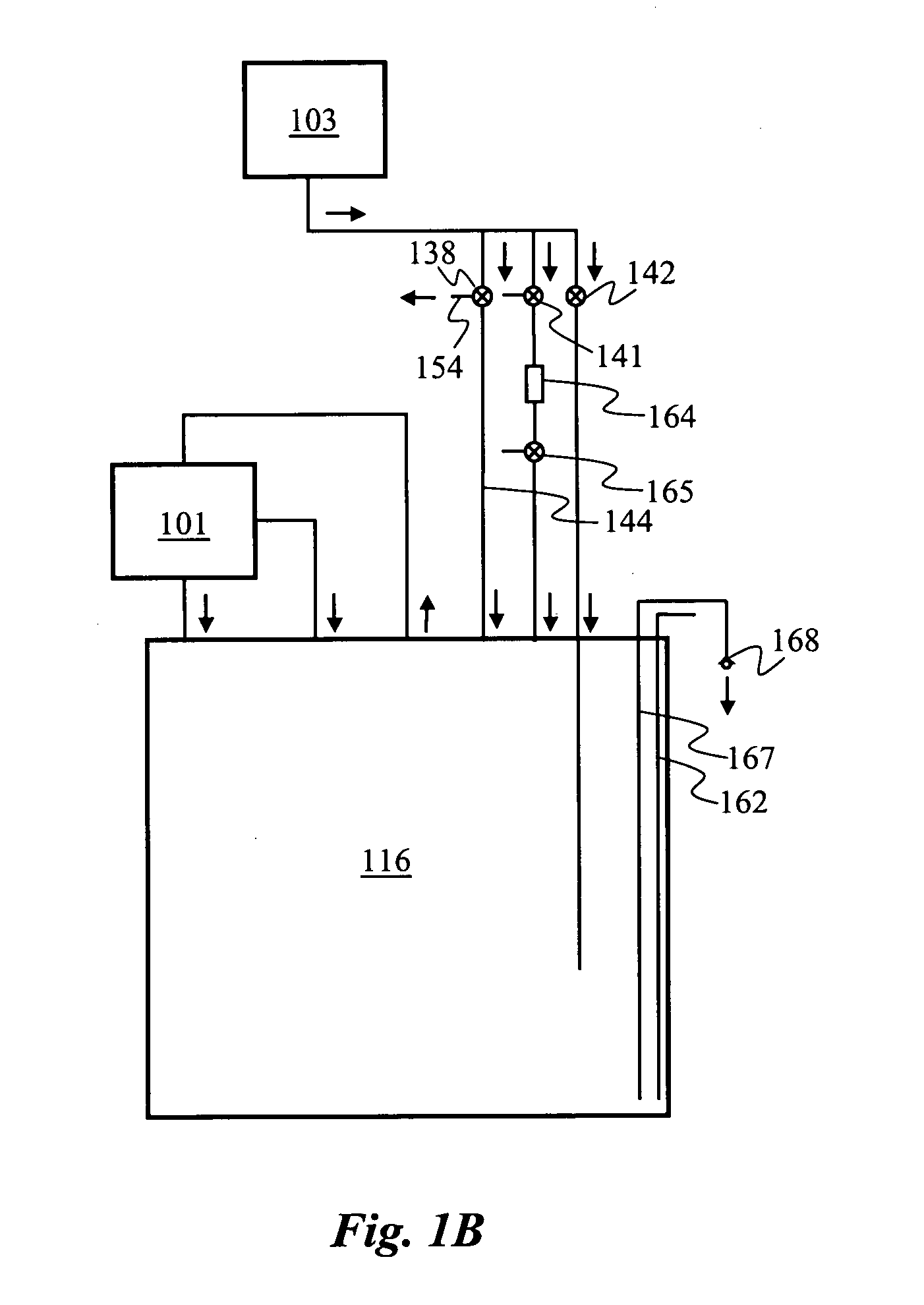Small-scale gas liquefier
a gas liquefier, small-scale technology, applied in the direction of machine operation mode, lighting and heating apparatus, container discharge method, etc., can solve the problems of bringing the cost of the cryogenic system close to that of the home refrigeration system, the new cooler cannot be adapted for these liquefaction purposes, and the implementation of the liquefaction process is not easy
- Summary
- Abstract
- Description
- Claims
- Application Information
AI Technical Summary
Benefits of technology
Problems solved by technology
Method used
Image
Examples
Embodiment Construction
[0012] A schematic of a device for the liquefaction of nitrogen according to a preferred embodiment of the invention is shown in FIG. 1A. Although the following description will focus on a device designed for the liquefaction of nitrogen, a the device may also be used for the liquefaction of oxygen or the other cryogenic gases. In such cases, the operating temperature is suitably adjusted and the refrigerant mixture is optimized to match the liquefaction temperatures of the particular gas to be liquefied.
[0013] We consider now the nitrogen liquefier device. The device has a nitrogen gas supply system 103 which has a first section outside dewar 116 where the gas is purified and compressed and a second section inside dewar 116 where the gas is cooled and condensed. Similarly, a cryogenic refrigeration system 101 has a warm section outside dewar 116 where the refrigerant is compressed and a cold section inside dewar 116 where the refrigerant expands and provides cooling. The refrigera...
PUM
 Login to View More
Login to View More Abstract
Description
Claims
Application Information
 Login to View More
Login to View More - R&D
- Intellectual Property
- Life Sciences
- Materials
- Tech Scout
- Unparalleled Data Quality
- Higher Quality Content
- 60% Fewer Hallucinations
Browse by: Latest US Patents, China's latest patents, Technical Efficacy Thesaurus, Application Domain, Technology Topic, Popular Technical Reports.
© 2025 PatSnap. All rights reserved.Legal|Privacy policy|Modern Slavery Act Transparency Statement|Sitemap|About US| Contact US: help@patsnap.com



